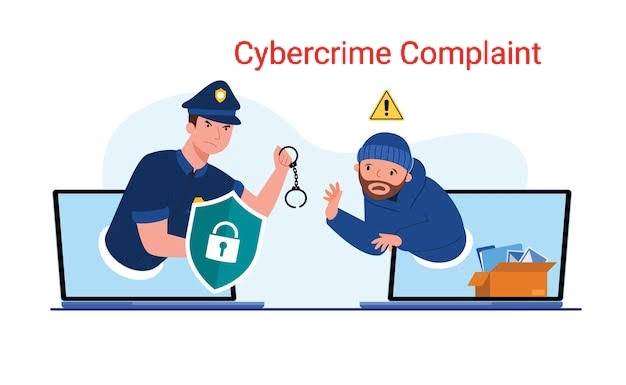In today’s modern time, where technology has become an integral part of our daily lives, the rise of cybercrime poses a significant threat to individuals and organizations alike. Cybercrime encompasses a wide range of illicit activities carried out using computers and the internet, including hacking, fraud, identity theft, and the dissemination of malicious software. As cybercriminals become increasingly sophisticated, it’s crucial to arm ourselves with knowledge and resources to protect against these threats. In the USA, a multitude of resources are available to both prevent and respond to cybercrime incidents.
Understanding the Scope of Cybercrime in the USA: Cybercrime is not just a theoretical concept; it’s a pressing reality. According to the FBI’s Internet Crime Complaint Center (IC3), a staggering number of over 847,000 complaints were received in 2021 alone, with reported losses exceeding a staggering $6.9 billion. This underscores the urgency of taking proactive steps to safeguard our digital presence and financial well-being.
Key Resources for Addressing Cybercrime:
1. FBI Internet Crime Complaint Center (IC3): The IC3 is a beacon of hope for cybercrime victims across the USA. With its mission to receive, review, and refer cybercrime complaints, IC3 serves as a national reporting center. If you’ve fallen victim to a cybercrime, whether it’s online fraud or hacking, you can file a report on their official website (https://www.ic3.gov/) or reach out by phone at 1-800-CALL-FBI (1-800-225-5324). By reporting incidents, you contribute to the investigation process and help prevent further harm.
File a Complaint : https://www.ic3.gov/
or
https://www.ic3.gov/Home/FileComplaint
2. National Cyber Security Alliance (NCSA): As the USA’s leading nonprofit organization focused on cybersecurity education and awareness, the NCSA equips individuals and businesses with the tools they need to stay safe online. Their website (https://www.staysafeonline.org/) offers a wealth of resources, including practical tips, educational materials, and guides to enhance online safety.
3. Cybersecurity and Infrastructure Security Agency (CISA): CISA, a federal agency under the Department of Homeland Security, is at the forefront of protecting critical infrastructure from cyber threats. Their website (https://www.cisa.gov/) is a goldmine of information, featuring insights into emerging threats, best practices, and tools for safeguarding your digital assets.
To receive immediate assistance or guidance, their helpline at mail : central@cisa.gov or by phone, 888-282-0870 is just a call away.
- Navigating Regional Contacts: CISA understands the value of localized support. Through regional offices, they serve as a pillar of defense across Federal, State, local, tribal, and territorial sectors. Covering various states, these offices offer an array of cybersecurity and infrastructure security capabilities. Reach out to your relevant region for assistance:
- Region 1 (Maine, New Hampshire, Vermont, Massachusetts, Rhode Island, Connecticut): CISARegion1@hq.dhs.gov
- Region 2 (New York, New Jersey, Puerto Rico, Virgin Islands): CISARegion2@hq.dhs.gov
- Region 3 (Pennsylvania, West Virginia, Maryland, Delaware, Virginia, District of Columbia): CISARegion3@hq.dhs.gov
- Region 4 (Kentucky, Tennessee, North Carolina, South Carolina, Mississippi, Alabama, Georgia, Florida): CISARegion4@hq.dhs.gov
- Region 5 (Ohio, Michigan, Indiana, Illinois, Wisconsin, Minnesota): CISARegion5@hq.dhs.gov
- Region 6 (Louisiana, Arkansas, Oklahoma, Texas, New Mexico): CISARegion6@hq.dhs.gov
- Region 7 (Missouri, Kansas, Nebraska, Iowa): CISARegion7@hq.dhs.gov
- Region 8 (Colorado, Utah, Wyoming, Montana, North Dakota, South Dakota): CISARegion8@hq.dhs.gov
- Region 9 (Arizona, Nevada, California, Guam, American Samoa, Commonwealth of Northern Mariana Islands, Hawaii): CISARegion9@hq.dhs.gov
- Region 10 (Washington, Oregon, Idaho, Alaska): CISARegion10@hq.dhs.gov
4.Federal Trade Commission (FTC): The FTC acts as a guardian against deceptive and fraudulent business practices. If you’re a victim of cybercrime, their website (https://www.ftc.gov/complaint) allows you to file a complaint online, ensuring that your case is documented. To speak with a representative and receive personalized guidance, their helpline at 1-877-FTC-HELP (1-877-382-4357) is a valuable resource.
Phone number. 1-202-326-2222
5. Identity Theft Resource Center (ITRC): Identity theft is a pervasive cybercrime that can have far-reaching consequences. The ITRC (https://www.idtheftcenter.org/) is a lifeline for those affected, offering expert assistance to navigate the aftermath of identity theft. If you’re a victim, you can reach their helpline at 1-888-400-5530 to access guidance on recovery and mitigation strategies.
Taking Action if You’re a Victim of Cybercrime:
Discovering that you’ve fallen victim to cybercrime can be distressing, but swift action can mitigate the damage and facilitate recovery.
Report the Crime: The first step is to report the incident to the appropriate authorities. Filing a report serves a dual purpose – aiding law enforcement in their investigations and creating an official record that may be crucial for insurance claims or legal proceedings.
Protect Yourself: To prevent further attacks, change compromised passwords, update software to address vulnerabilities, and be cautious about sharing personal information online.
Seek Professional Help: The resources mentioned above, such as the ITRC and FTC, are here to assist you. Seek their guidance to navigate the aftermath of a cybercrime, recover lost funds, and fortify your defenses.
Preventing Cybercrime:
The adage “prevention is better than cure” holds true in the realm of cybercrime. Arm yourself with knowledge and proactive measures to stay one step ahead of cybercriminals.
Guard Your Information: Exercise caution when sharing personal and financial information online. Verify the legitimacy of websites and refrain from providing sensitive details unless you’re certain of their security.
Strong Passwords: Use complex passwords and update them regularly. Avoid using the same password across multiple accounts to prevent a domino effect if one account is compromised.
Software Updates: Regularly update your software, including operating systems and applications. These updates often contain security patches that shield you from evolving cyber threats.
Stay Informed: Educate yourself about the latest cyber threats and scams. Staying informed empowers you to recognize and resist potential attacks.
In conclusion, the USA faces a persistent and evolving cybercrime landscape. However, individuals and organizations are not defenseless. The wealth of resources available, coupled with proactive measures and a commitment to online safety, can collectively fortify the nation’s digital resilience. By understanding the risks, knowing where to turn in times of crisis, and remaining vigilant, we can navigate the digital landscape with confidence, ensuring our online experiences are secure, productive, and enriching.




